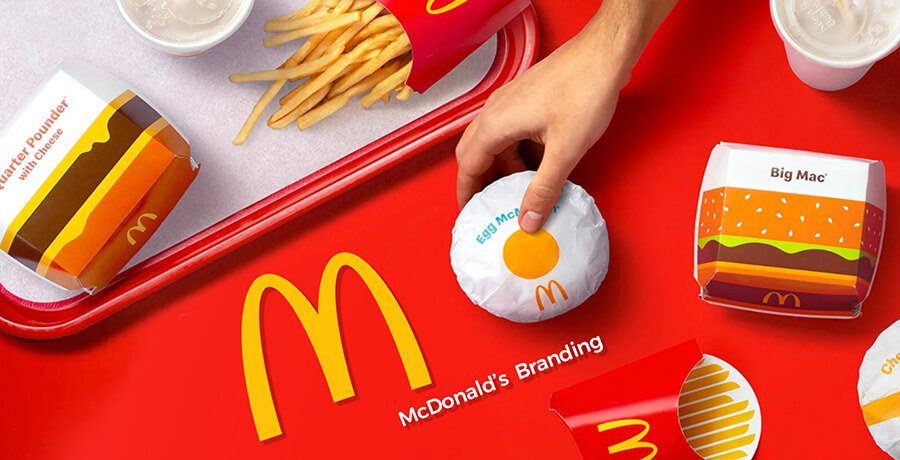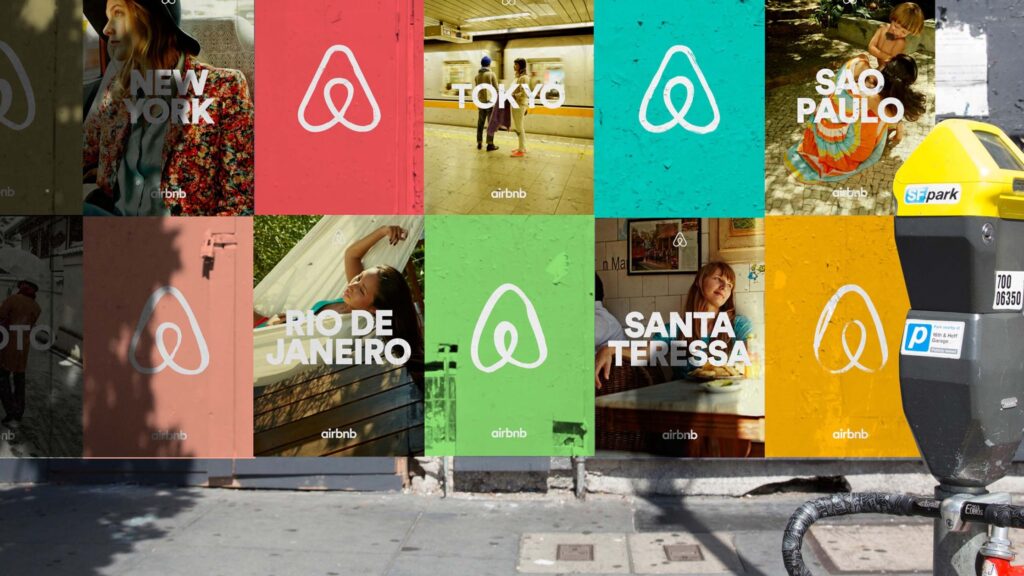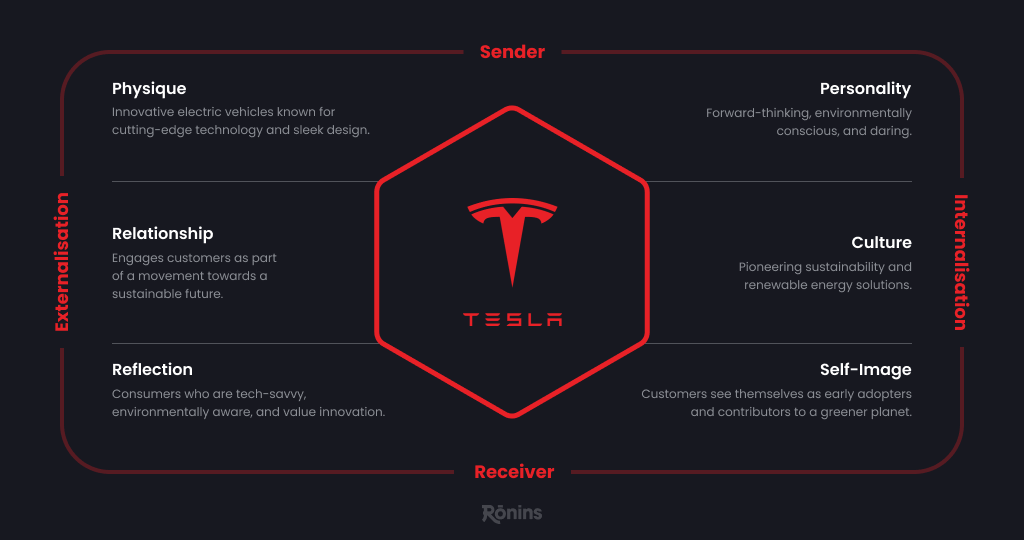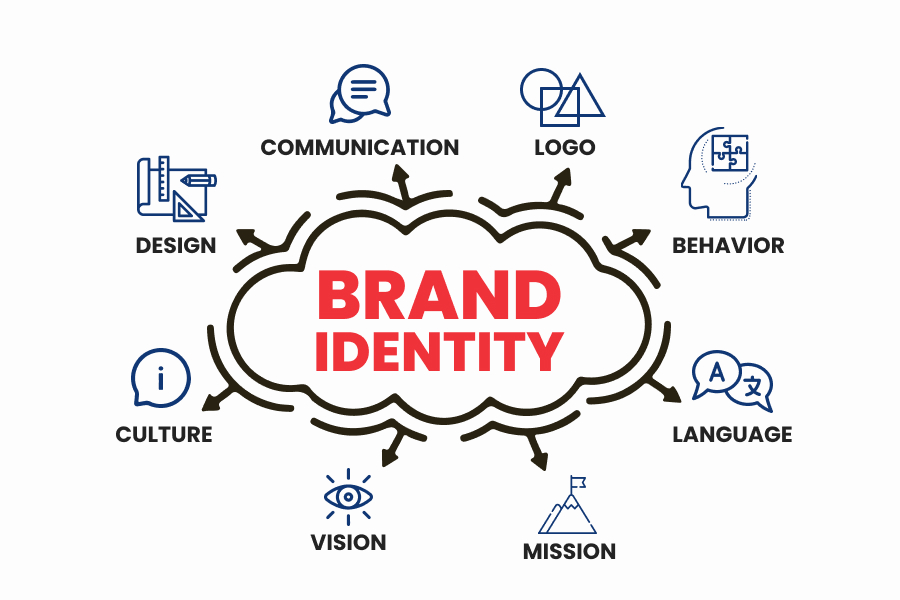You must be tired of blending in! We don’t blame you, in today’s crowded marketplace, a powerful brand identity is your secret weapon. It’s the magic that makes you stand out and connect with your ideal customers.
However, you have come to the right place! This guide will crack the code on crafting a brand identity that’s unique, memorable, and speaks directly to your audience. We don’t judge whether you’re a startup brewing or a company ready for a refresh, we’ve got just the right amount of ingredients to help you build a brand that shines. Let’s dig in! But first…
What Do You Understand by the term “Brand Identity?”
Brand identity is the collection of elements that a company creates to portray a specific image of its brand to consumers.
It is how a company distinguishes itself from competitors and defines what it stands for in the minds of customers. Brand identity goes beyond just a logo and encompasses everything that embodies the brand’s personality, values, and mission.
Key components of brand identity include:
Logo
The visual representation of the brand that is used on all marketing materials and products. It is often the first thing that comes to mind when people think of a brand.
Color palette
The specific colors chosen to represent the brand. Colors evoke certain emotions and can shape how consumers perceive a brand.
Typography
The fonts and typography styles used in all brand communications. Consistent typography helps create brand recognition.
Voice and tone
The style of language and communication used by the brand. This includes the brand’s personality and how it speaks to its audience.
Imagery
The type of images and graphics used to represent the brand. Consistent imagery helps reinforce brand identity.
- Values and mission
The core values and mission statement of the brand that drives its actions and decisions. This is what the brand stands for and what it aims to achieve.
Packaging
The design of product packaging that reflects the brand’s identity and values. Packaging is an important touchpoint between the brand and the consumer.
Website and Online Presence
The design and content of the brand’s website and digital platforms. This includes social media profiles, online advertising, and email marketing.
Brand identity is crucial for creating a strong and consistent brand image that resonates with consumers. It helps build trust, loyalty, and recognition among customers, ultimately driving brand growth and success.
Why is Brand Identity Important?
Brand identity is crucial for businesses of all sizes for several key reasons:
1. Differentiation
In a crowded marketplace, a strong brand identity helps you stand out from the competition. It clearly communicates your unique value proposition and what sets you apart. Imagine two cafes – one with a generic logo and name, and another with a warm, inviting logo and a name like “Cozy Cup.” The second cafe’s brand identity instantly tells you it prioritizes a comfortable and welcoming atmosphere.
2. Brand Awareness and Recognition
A consistent brand identity across all marketing materials (website, social media, advertising) increases brand awareness. People start to recognize your logo, colors, and voice, making your brand more familiar and memorable. Think of the red swoosh of Nike – instantly recognizable and a powerful symbol of the brand.
3. Customer Loyalty and Trust
A strong brand identity builds trust and loyalty with your customers. When a brand consistently delivers on its promises reflected in its identity, customers feel confident choosing them over competitors. For instance, Patagonia’s brand identity of environmental responsibility fosters customer loyalty among those who value sustainability.
4. Employee Engagement
A well-defined brand identity goes beyond customers. It can also attract and retain top talent. Employees who are passionate about a brand’s values and mission are more likely to be engaged and productive.
5. Marketing Efficiency
A clear brand identity makes your marketing efforts more effective. When your message and visuals are consistent, it creates a stronger impact on your target audience. Imagine a confusing ad with clashing colors and fonts – it wouldn’t be very effective. A strong brand identity ensures all your marketing materials work together seamlessly.
6. Premium Perception
A well-crafted brand identity can create a perception of quality and premium value. This can allow you to command higher prices for your products or services. Think of luxury brands with meticulous attention to detail in their branding – it reinforces their image of exclusivity and high quality.
In short, brand identity is the foundation of your brand. It’s the story you tell the world about your company, and a strong brand identity can lead to significant benefits in terms of customer acquisition, retention, and overall business success.
What is the Relationship Between Brand Identity and Brand Image?
Brand identity and brand image may sound like fancy marketing terms, but they’re actually pretty fun concepts to dive into!
Brand Identity
Brand identity is like a brand’s personality – it’s all the cool things a company does to show off its unique style. Think of it as a company’s fashion sense, made up of logos, colors, fonts, and even the way they talk to you. It’s how a company wants you to see them, like showing off their best side on a first date.
- Brand voice: You can think of it as a brand’s way of speaking. Is it playful and quirky, like a brand using emojis and slang in its social media posts? Or is it sophisticated and professional, using formal language in its advertising?
- Brand storytelling: Every brand has a story to tell. Maybe it’s the story of the passionate founder or the innovative way their product is made. A strong brand identity uses storytelling to connect with its audience on an emotional level.
Think about a shoe brand like Converse. Their brand identity screams “cool and rebellious” with their iconic Chuck Taylors, vintage-inspired marketing campaigns, and use of edgy rock music in their ads.
Brand Image
Now, brand image is what happens when people get to know a brand. It’s like the reputation a brand earns from all of its actions, messages, and the way it treats its customers. Brand image is how all of this comes together to create the “vibe” of a brand – what people think and feel when they hear its name.
- Customer experience: How a brand treats its customers directly impacts its image. Are they known for friendly and helpful customer service, or for long wait times and unhelpful responses?
- Brand associations: What pops into your mind when you hear a brand name?
For example, does the name “Tesla” make you think of innovation and luxury electric cars, or something else entirely?
The Ideal Relationship
When a brand identity perfectly aligns with the brand image, it creates a powerful connection with consumers. They see the brand for what it aspires to be, and it resonates with their values. This consistency is key to building brand loyalty and trust.
Examples of Brands Who Nailed It:
- Apple: Their sleek product design, user-friendly interface, and focus on innovation all contribute to their image of being a premium, cutting-edge tech company.
- The Body Shop: Their emphasis on natural ingredients, ethical sourcing, and community activism creates a brand image of being all about natural beauty and social good.
By understanding the difference between brand identity and brand image, companies can craft a message that resonates with their target audience and build a strong reputation in the marketplace.
So, brand identity is a brand’s cool style choices, while brand image is the overall impression it leaves on its fans. When a brand nails both, it’s like having a super popular brand that everyone loves and wants to hang out with!
How Do You Craft Your Distinctive Brand Identity Elements
So you want your business to stand out from the crowd? A strong brand identity is your secret weapon. It’s the essence of your company, the personality that sets you apart and resonates with your ideal customers. Here’s a detailed breakdown with steps and examples to help you craft your own distinctive brand identity:
Step 1: Know Yourself Inside Out
- Mission and Values:
What is your company’s core purpose? What principles guide your decisions? Think of companies like TOMS, whose mission to provide shoes to children in need defines their entire brand identity. - Strengths and Differentiators:
What makes your business unique? What problem do you solve exceptionally well? Are you known for innovative products, exceptional customer service, or a commitment to sustainability? Highlighting your strengths in your brand identity attracts customers who value the same things. - Target Audience:
Who are you trying to reach? Understanding your ideal customer’s demographics, interests, and motivations is crucial. This helps tailor your brand voice and message to resonate with them. For instance, a children’s clothing brand might use a playful and colorful identity, while a financial services company might choose a more sophisticated and professional approach.
Step 2: Define How You Want to Speak
- Personality:
Imagine your brand as a person. Are they friendly and approachable, or bold and daring? Do they use humor or maintain a serious tone? Maintaining a consistent voice across all communication channels (website, social media, advertising) is key. Think of Mailchimp’s quirky and helpful tone in their emails, as opposed to a luxury watch brand’s focus on heritage and craftsmanship in their marketing materials. - Language:
Formal or casual? Technical jargon or everyday language? The choice of words should reflect your brand personality and resonate with your target audience. For example, a company selling athletic wear might use action verbs and motivational language, while a legal firm would stick to clear and concise professional language.
Step 3: Visualize the Look and Feel Of Your Brand
- Logo:
This is your brand’s visual signature. It should be memorable, reflect your brand personality, and work well across different mediums (print, digital). Think of the iconic swoosh of Nike or the minimalist apple logo – instantly recognizable and symbolic of the brand’s core values. - Color Palette:
Colors evoke emotions and can significantly impact brand perception. Choose colors that align with your brand personality and resonate with your target audience. For example, a tech company might use cool blues and greens to convey innovation and trust, while a children’s toy brand might use bright and playful colors to evoke joy and creativity. - Typography:
The fonts you choose can also contribute to your brand image. Consider fonts that are easy to read and reflect your brand personality. For example, a luxury brand might use a classic serif font, while a modern tech company might opt for a clean and minimalist sans-serif font.
Step 4: Craft A Narrative Brand Story
- Storytelling is a powerful tool to connect with your audience on an emotional level:
Hare your company’s origin story, your founder’s passion, or the inspiration behind your product. The Body Shop, for instance, emphasizes its commitment to ethical sourcing and community activism in their brand story, creating an image of social responsibility. - Customer Testimonials:
Let your customers be your brand ambassadors. Share positive reviews and success stories to showcase the impact your brand has.
Step 5: Consistency is Key
- Brand identity isn’t just a logo and tagline. It’s a promise:
Ensure every touchpoint with your customers aligns with your brand identity. This includes customer service interactions, social media posts, product packaging, and even the tone of voice in your emails. - Brand guidelines:
Develop a brand style guide that outlines your logo usage, color palette, fonts, and brand voice. This ensures consistency across all marketing materials and communication channels.
Examples of Brand Identity
We have listed some of the examples of companies who have excelled brand identity. Check it out!
1. Apple: Simplicity and Innovation

- Brand Identity: Apple’s brand identity is all about clean lines, minimalist design, and a focus on user experience. Their logo, the bitten apple, is instantly recognizable and symbolic of innovation and thinking differently.
- Success Factors:
Consistent Design: From product design to marketing materials, Apple maintains a consistent aesthetic that exudes simplicity and premium quality.
Focus on Innovation: Apple is known for pushing boundaries and introducing groundbreaking technology. This aligns perfectly with their brand image of being at the forefront of progress.
Emotional Connection: Apple’s marketing campaigns often focus on the emotional impact of their products, creating a connection with their audience who value creativity and a seamless user experience.
2. McDonald’s: Familiarity and Consistency

- Brand Identity: McDonald’s brand identity is all about consistency and familiarity. Their iconic golden arches are recognized worldwide, symbolizing a quick and reliable meal option. Their red and yellow color scheme is cheerful and inviting.
- Success Factors:
Universal Appeal: McDonald’s brand identity caters to a broad audience. Their menu offers familiar favorites, and their restaurants provide a predictable and comfortable dining experience.
Global Recognition: The golden arches are a beacon of familiarity across cultures, making McDonald’s a trusted brand for travelers worldwide.
Adaptability: While maintaining core elements, McDonald’s menus and marketing can adapt to local preferences, ensuring continued relevance in different regions.
3. Spotify: Connecting Through Music

- Brand Identity: Spotify’s brand identity is about personalization and a vibrant music experience. Their logo is simple yet dynamic, often changing colors to reflect their ever-evolving music library.
- Success Factors:
- User-Centric Design: Spotify’s focus on personalized playlists and recommendations creates a sense of connection for users who feel their music taste is understood.
- Embrace of Diversity: Spotify’s brand identity celebrates music in all its forms, catering to a wide range of musical tastes and genres.
- Evolving Platform: Spotify is constantly innovating and adding new features to their platform, maintaining a fresh and dynamic brand image.
4. Airbnb: Belonging Anywhere

- Brand Identity: Airbnb’s brand identity revolves around community, travel experiences, and a sense of belonging anywhere in the world. Their logo is a welcoming symbol that combines a globe and a house.
- Success Factors:
- Unique Experiences: Airbnb focuses on offering unique and authentic accommodations, setting them apart from traditional hotels.
- Community Focus: Airbnb fosters a sense of community by connecting travelers with local hosts, creating a more personal travel experience.
- Global Appeal: Airbnb caters to a wide range of travelers, offering options in various locations around the world.
5. Tesla: Sustainable Disruption

- Brand Identity: Tesla’s brand identity is all about innovation, sustainability, and pushing the boundaries of electric vehicles. Their sleek car designs and minimalist logo reflect their futuristic approach.
- Success Factors:
- Environmental Focus: Tesla positions itself as a leader in sustainable transportation, appealing to environmentally conscious consumers.
- Luxury Image: Their high-performance vehicles and focus on technology create a perception of luxury and innovation.
- Visionary Leader: Elon Musk, Tesla’s CEO, is a charismatic figure who embodies the brand’s spirit of disruption and forward-thinking.
These are just a few examples of successful brand identities. By understanding the key factors that contribute to their success, businesses of all sizes can learn to craft their own distinctive brand that resonates with their target audience and sets them apart in the marketplace
You can join our socials – Twitter, LinkedIn, and Facebook to get to know more about Brand Identity and how you can re-evaluate your content strategy and ensure it truly serves your audience. See you there!
